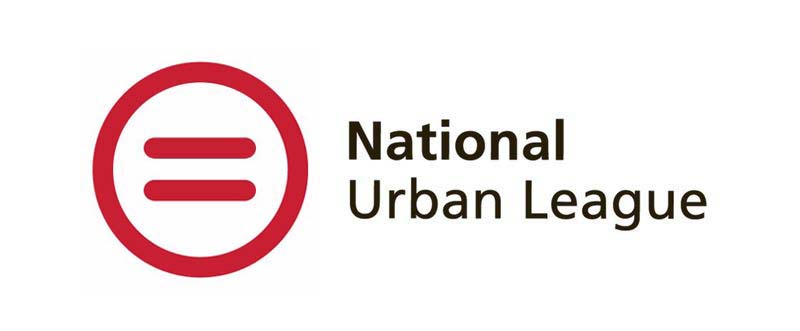When you think of a remote job, your mind may conjure the image of working from a beautiful location — like a cozy log cabin on a snow covered mountain or a bungalow on a peaceful beach. While those are possibilities, what is a remote job, exactly? Is it really something you can do on the beach or while traveling abroad?
The answer to that question is yes and no. A remote job can be those things (and more!), but that isn’t always the case. We’re here to help you understand what remote working is and isn’t and what you should know before accepting a remote job offer:
What Is Remote Work?
When people ask “What is a remote job?” they often think it’s a job they can do anytime and anywhere. While it’s true that some remote jobs meet those conditions, the reality is that a majority of them don’t.
So, what is a remote job? It’s one you can do outside traditional office or in-person settings, with a majority of them being performed entirely online. While job titles like writer and coder spring to mind, human resources, teaching, and sales positions can all be remote jobs.

Resume Writing Masterclass
Learn how to craft a resume that shines in this free course from Forage. Learn how to reframe your duties as accomplishments, showcase your outcomes, and demonstrate why you're the best person for the job.
Avg. Time: 5-6 hours
Skills you’ll build: Resume writing, professional branding, identifying job titles, keywords, explaining industry-relevant skills
The key component of a remote job is that it doesn’t require you to work in an office. Most remote companies don’t even have a physical office. Instead, the company’s headquarters are your home office or the coffee shop around the corner. As executive coach Brooks E. Scott explains, “A remote job is something we can do from anywhere that we have resources to support our work.”
Other Ways to Say “Remote Job”
While “remote job” is the most common term to describe remote work, employers also use other phrases to describe their remote roles:
- Telecommuting
- Virtual work
- Home-based job
- Work-from-home job
- Telework
- Distance work
- Distributed work
Remote Job Definitions
Thanks to the pandemic, remote work is a much bigger part of the employment landscape. However, “remote job” has, unfortunately, become a catchall term and sometimes a remote job isn’t exactly what you think it is.
Remote Job vs. Work-From-Anywhere Job
Just because a job is remote and you never have to report to an office doesn’t mean you can work from anywhere you want. Some companies require staff to live in specific countries or locations (like U.S. states or even cities). This requirement is often due to legal, licensing, or tax laws the company must comply with. Sometimes remote jobs are location-specific because you may be responsible for a certain territory that you need to be close to or have to be within driving distance of the office for in-person trainings or meetings.
>>MORE: Should I Move for a Job?
And some remote roles may allow you to live wherever you want but won’t let you work from the coffee shop or public library due to security requirements. An example would be if you worked in financial services. You might be able to live anywhere in the world but be required to log into company systems from home using a VPN and company-issued desktop.
Remote Job vs. Flexible Job
Remote work and flexible work often go hand-in-hand, but just because a job is remote doesn’t mean it’s flexible, and vice versa.
Flexible work comes in many forms, but one example is the ability to choose when you work. If you control when your work day starts and ends, you have a flexible job. And flexible jobs can be in-person (like a dog walker) or remote (like a data scientist).
Brooks gives this example. “When I worked for Meta, I knew dozens of engineers who would come into work at around 7:15 p.m., grab dinner, and then work through the night. But on other weeks, they would work during the 9:00 a.m. to 5:00 p.m. time frame. That’s flexibility.”

Professional Skills
Find out who you are and want to be as a professional in this free course from Discover Financial Services. Gain valuable insights into how the corporate world works and how you'll play a role in it.
Avg. Time: 2-3 hours
Skills you’ll build: Self-reflection, discovery, organization, planning
Some remote jobs don’t have that level of flexibility or any kind of flexibility. For example, many remote customer service jobs require you to work a specific shift with a defined start and end time. So, while the job is remote, it’s not necessarily flexible.
Remote vs. Remote-First
Some remote jobs are at remote companies, while others are at a remote-first company.
In one type of company, there are no headquarters or main office. The company doesn’t even have satellite offices or rent coworking spaces. As Brooks explains, “It’s assumed that everyone from the intern to the CEO is working remotely all the time.” Everyone works from whatever location works for them!
In the other type of arrangement, the company commits to hiring the best person for the role no matter where they’re located, and in-person work is not required. However, this company often also has offices or coworking spaces where people can work in person as much or as little as they want.
>>MORE: The Best Small Cities for Remote Work
So, which is which?
Well, it depends on who you talk to. Some say that the first explanation describes a remote company and the second a remote-first company. However, others say it’s the opposite.
The lesson here is that what matters is the level of remote work the company encourages and allows. If that isn’t clear from the job description, it’s definitely a question you should ask the hiring manager.
What Is a Hybrid Remote Job?
A hybrid remote job is different from other types of remote work. “Hybrid jobs require you to be at a specific office location for a set amount of time,” explains Brooks, but not every day of the week. The most common schedule is that you perform your job remotely a couple of days a week, and the remaining days you’re in the office.
Some companies mandate which days employees (or whole teams) have to be in the office, while others let individuals or team leaders choose the schedule that works best for them.
Types of Remote Employment Status
Within the world of remote work, there are also different types of remote employment statuses, and it’s critical to understand the differences before you accept the job offer.
Regular Employee
This is the traditional employment arrangement. As a full-time regular remote employee, you’ll generally work 40 hours per week and receive many of the same benefits and protections as a full-time in-person employee. It’s worth noting that there are some regular part-time remote jobs, too.
>>MORE: How Many Work Hours Are in a Year?
However, not all remote employees are eligible for the same protections or benefits as in-person employees. For example, many in-person employees are eligible for unpaid leave with job protections under the Family Medical Leave Act (FMLA). But remote employees who work for companies without a central office may not be covered by FMLA.
Freelance
Because employers must take on certain obligations when they hire regular employees, some remote jobs are completely freelance. This allows the company more freedom in who they hire. It also gives the employees more freedom to choose when and where they work.
However, as a freelancer, you do not have the same rights and protections as a regular employee. For example, you’re responsible for paying all of the taxes on your wages instead of the employer paying their share on your behalf.
Digital Nomad
Though not an employment status, another popular type of remote work is digital nomadism.
Digital nomads work remotely as freelancers or regular employees but take their work with them as they travel the country or world. Brooks offers this example, “One of my friends has been traveling the world for the last year and a half while still running a thriving coaching practice. She hasn’t stayed anywhere longer than a few weeks for all of this time.”

Getting Ready to Join the Workforce
Get ready for the world of work in this free course from Standard Bank. Enhance your work-centric skills like how to write a professional email, delegate tasks, resolve conflicts, and more.
Avg. Time: 4-5 hours
Skills you’ll build: Emotional intelligence, research, time management, conflict resolution, customer service, problem solving
And despite the pandemic, the popularity of digital nomadism has grown over the last few years. In 2019 there were approximately 7.9 million digital nomads, but by the end of 2022, there were nearly 17 million of them!
Pros and Cons of a Remote Job
While the popularity and availability of remote jobs have grown in recent years, remote work isn’t for everyone. Here’s what to consider before pursuing a remote job.
Remote Job Pros
For some people, not having to commute is a major pro of remote work. Not only do they save money, but they’re often less stressed since they don’t have to sit in traffic or hope the bus is running on time. By some estimates, employees got back 72 minutes per week thanks to working from home and not having to commute.
Many remote workers also find they are more productive when they don’t work in an office. Between the ability to control the temperature and not having to listen to other people’s conversations, having more control over their working environment improves their overall productivity and efficiency.
And even though not all remote jobs are flexible jobs, remote jobs are often more flexible than in-person jobs, which allows you to work at a time when you’re most productive or carve out time in the middle of the day for appointments. This, in turn, often leads to better work-life balance.
>>MORE: The Best Cities for Young Professionals for Work-Life Balance
Remote Job Cons
However, one of the cons of a remote job is that it can be isolating. Some people enjoy the hustle and bustle of working in an office and don’t mind when people pop in with a quick question or to chat. They like having people to go to lunch with every day or to hang out with after work.
And, depending on the company, it can be harder to build a thriving career in a fully remote job. “The downside is that it could be more difficult to build meaningful connections with the people who have the authority to promote you,” says Brooks. This is especially true in a hybrid remote job environment where you might come in on days when your supervisor (or supervisor’s supervisor) isn’t there.
>>MORE: What Is Company Culture (and Why Does It Matter)?
One other common remote job con is that it can be challenging to maintain the boundaries between your work and home life. Working from home jobs often require you to work where you live and live where you work, making it difficult to “punch out” at the end of the day. You may find yourself working more than you would if you traveled to and from an office every day.
Remote Work: The Bottom Line
While a remote job isn’t for everyone, it may be right for you. But before diving into the world of remote work, make sure you understand what kind of remote role it is and ensure that it will give you what you’re looking for in a job.
No matter what kind of job you’re looking for, learn the skills you need in a free Forage job simulation today.
Image Credit: Canva

